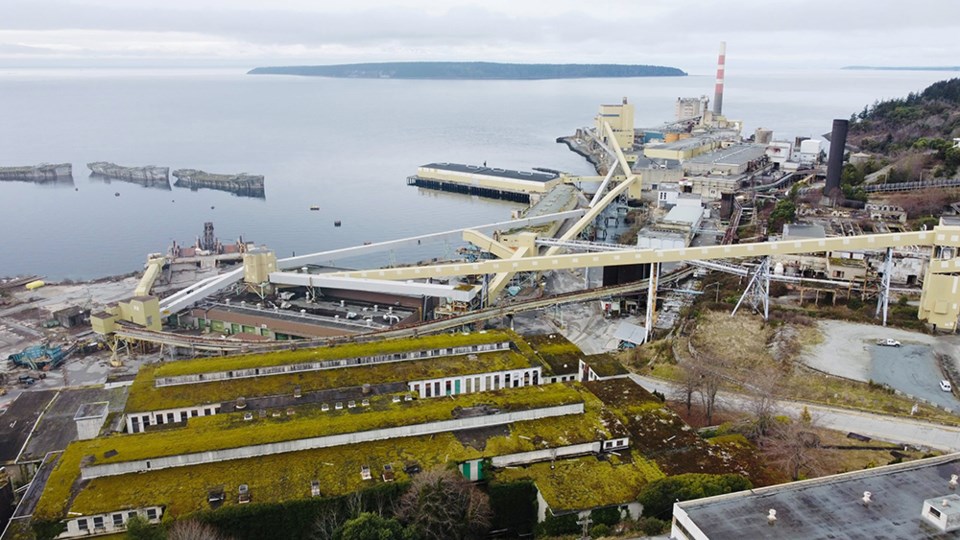Reaction to the permanent curtailment of the Catalyst Paper Tis’kwat mill by Paper Excellence indicates hopes for environmentally responsible future activity at the qathet region site.
City of Powell River mayor Ron Woznow said he has spoken with Paper Excellence about the permanent curtailment.
“The gist of it is they are going to dismantle their equipment,” said Woznow.
Regarding the matter of taxation, the city is working the best it can to assist getting new businesses in the location.
“It is a good facility,” added Woznow.
He said it would be to the benefit of the community to have a sale go through, with a business that is environmentally friendly.
Woznow said the city is hoping federal and provincial governments will play a role.
“The rationale is very simple,” said Woznow. “Over the last 110 years, there’s been a minimum of $1 billion that has flowed to the provincial and federal governments in taxes. We think it’s time for reciprocity – to turn it around. We’re hoping that our MLA [Nicholas Simons] and MP [Rachel Blaney] can champion for this to happen.”
Woznow said the city is monitoring the mill situation closely.
Due diligence
Tla’amin Nation hegus John Hackett, in a written statement, indicated this news, although anticipated, has to be very hard to hear for the workers who relied on the mill to feed their families.
“Tla’amin remains committed to our long-term vision of responsible site ownership and stewardship at Tis’kwat,” stated Hackett. “It’s a fast-moving and complex situation that Tla’amin is actively involved in. As we speak, Tla’amin Nation has experts on site concluding due diligence activities.”
Hackett stated that Tla’amin continues to build a coalition of partners that recognize its connection to Tis’kwat and are committed to ensuring a bright and sustainable future for this very important site.
“Just this week, qathet Regional District signed a joint statement of commitment, and Tla’amin is in active discussions with the Province of BC about the long-term stewardship of the site,” stated Hackett.
Later than expected
UNIFOR Local 1 spokesperson Eldon Haggarty, the former president of the papermakers’ union local, said the union knew permanent curtailment was imminent.
“I actually expected, through talks with the company, that it was going to happen sometime in early spring,” said Haggarty. “This is later than I expected and I actually thought that the property would have been sold by now.
“They [Paper Excellence] still have people looking into the property, as was mentioned by [chief operating officer] Stew Gibson in the company’s media release.”
Haggarty said this doesn’t change anything for Local 1.
“All my members who were capable of working have taken voluntary severance some time ago,” said Haggarty. “The company was forthcoming with severance and paid out everybody who wished to go.
“The only people I have in the local who I’m looking after until the end of the year are people on long-term disability or WCB. I only have about seven members left in Local 1.”
Union strength at the time of this last curtailment was around 46 or 47 members, including the members on disability, said Haggarty. He said his papermaker local was the smaller of the two locals in the mill.
Before the closure, Haggarty said the mill was only running the number 11 machine, making paper for packaging – an Amazon-type paper for China.
“In the end, when we shut down, we were running that machine at a higher percentage than ever before; we were in the very high 90 percentile range,” said Haggarty. “Part of the problem is, if you’re still not making money, because it’s a low-grade product and we were developing it, you can’t show how you are going to increase your run-ability when you are running at almost 100 per cent. It would have required substantial amounts of money.
“We were looking at a project of somewhere around the $35 million range to change into other products that would give us better value, because we couldn’t run any faster. We were maxed out and at capacity, both on efficiency and speed.”
Haggarty said the mill went back about 110 years and when cleaning out the union office, Local 1 members were finding papers, including union certification, going back into the 1930s. He said the union still exists, and he’s under contract until the end of the year to look after the needs of the members, and to tidy up any remaining dealings. At the end of the year, the western region will assign somebody to deal with any issues.
“Local 1 exists on paper but there is no executive anymore,” added Haggarty.
He said he is hoping that any prospective buyer of the mill site can bring prosperity back to the community. He said when the mill first went down about four years ago, he thought the mill was done then. He said, however, that the company and union got it back up and running for another year.
“We got an extra year out of it,” said Haggarty. “The company has treated the membership well. Working with the company for Local 1 has been very good in a very bad situation. They need credit where credit is due. They made it the best it could have been.
“Now, we look forward, hopefully, to somebody being able to buy it. Hopefully, some clean industry will come in here and provide jobs so we can keep some of our younger families here.”
Join the Peak's email list for the top headline right in your inbox Monday to Friday: prpeak.com/account/mailinglist.



